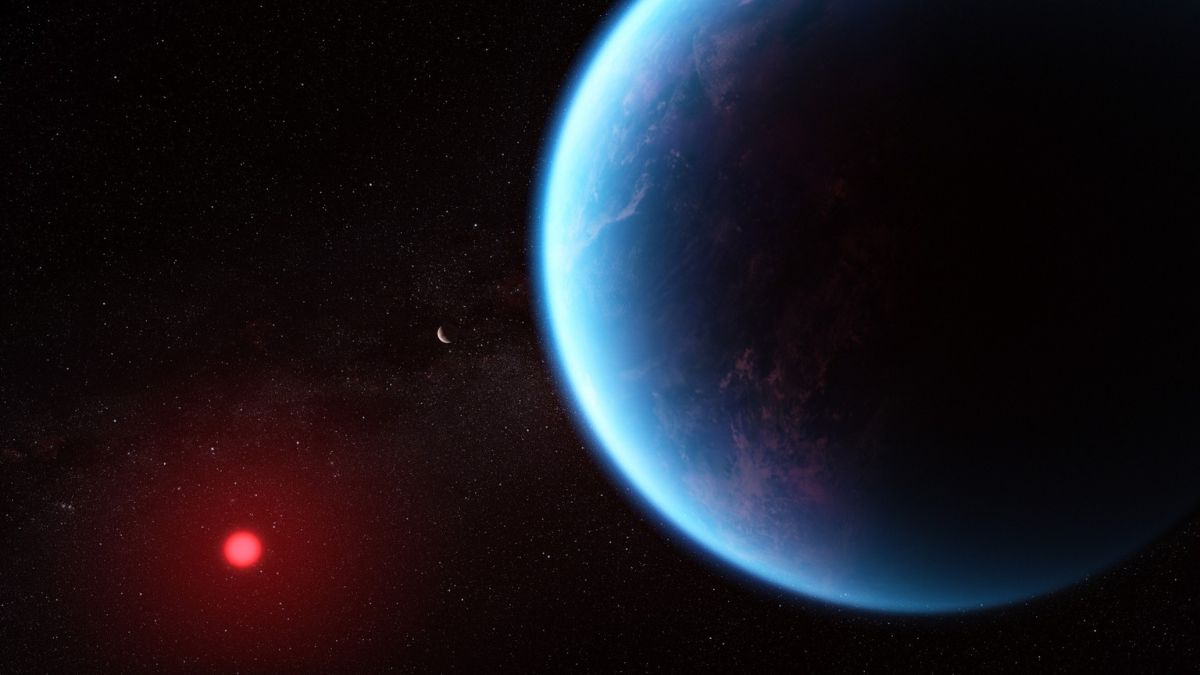In a groundbreaking development, scientists from Cambridge University have found the most promising evidence yet that life may exist beyond Earth. Their research, using NASA’s James Webb Space Telescope (JWST), identified life-associated molecules like dimethyl sulphide (DMS) and dimethyl disulphide (DMDS) in the atmosphere of a distant exoplanet named K2-18b. Although these findings are not yet confirmed at the highest scientific certainty, they represent a crucial step in the search for extraterrestrial life and open new frontiers in astrobiology.
Key Points
What is K2-18b?
- An exoplanet located 124 light-years from Earth in the constellation Leo.
- 2.6 times the size of Earth; orbiting a red dwarf star.
Significance of the Discovery
- Researchers found potential biosignatures in K2-18b’s atmosphere.
- These include Dimethyl Sulphide (DMS) and Dimethyl Disulphide (DMDS) — gases produced by phytoplankton and bacteria on Earth.
Instrument Used
- Discovery made using James Webb Space Telescope (JWST).
- The JWST analyses starlight passing through planetary atmospheres to detect chemical signatures.
Level of Certainty
- Current detection has three sigma (99.7%) certainty — not sufficient for scientific confirmation.
- For confirmation, a five sigma result (99.9999% certainty) is required.
Why It’s Important
- Presence of DMS and DMDS suggests possible life, especially marine-type microbial life.
- If confirmed, would be the first detection of extraterrestrial life and support the idea that life may be common in the galaxy.
Scientific Impact
- Represents a pivotal moment in astrobiology.
- May redefine our understanding of life in the universe if confirmed.
Publication
- Research findings published in The Astrophysical Journal Letters.
| Summary/Static | Details |
| Why in the news? | James Webb Telescope Founds Possible Life on Exoplanet K2-18b |
| Planet Name | K2-18b |
| Location | 124 light-years away in Leo constellation |
| Size | 2.6 times Earth |
| Orbit | Red dwarf star |
| Molecules Detected | DMS (Dimethyl Sulphide), DMDS (Dimethyl Disulphide) |
| Method of Detection | James Webb Space Telescope (JWST) |
| Possible Biological Source | Marine phytoplankton and bacteria (on Earth) |
| Publication | The Astrophysical Journal Letters |



 ISRO Projects Seven Launches Including U...
ISRO Projects Seven Launches Including U...
 Google Unveils Project Suncatcher to Dev...
Google Unveils Project Suncatcher to Dev...
 AIIMS Delhi Conducts India’s First Dedic...
AIIMS Delhi Conducts India’s First Dedic...







